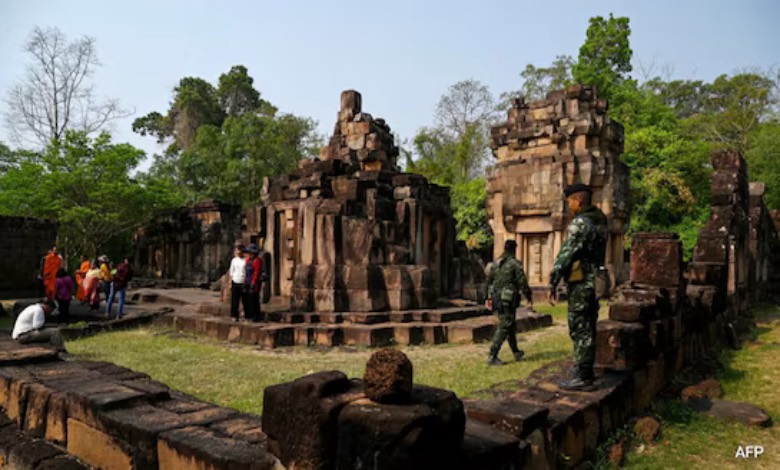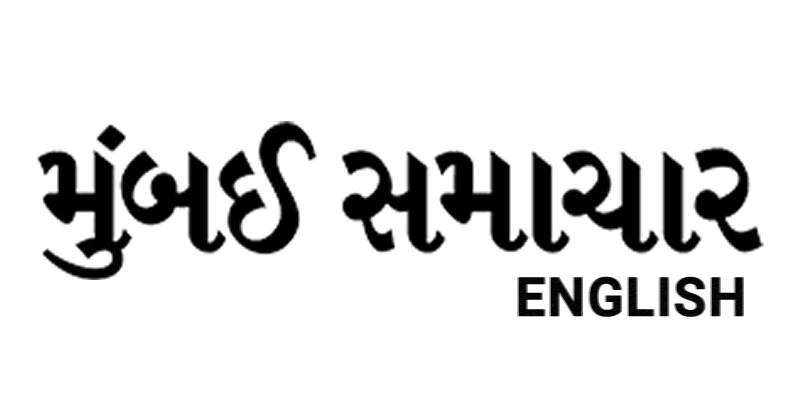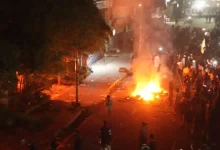Why Buddhist Country Thailand & Cambodia Are at War Over Hindu Temples & Heritage Across Colonial Borders

Tensions between Thailand and Cambodia exploded into violence on Thursday, marking the deadliest escalation in years over the disputed Preah Vihear temple. The 11th-century Khmer monument, a source of national pride and contention for both nations, became the epicenter of fierce border clashes that left at least nine civilians dead. In Thailand’s Si Sa Ket province, explosions near a gas station killed several civilians, while 14 others were injured across three border regions. Thai fighter jets launched airstrikes on Cambodian positions near the temple, prompting Cambodia’s defense ministry to accuse Thailand of targeting roads in the Preah Vihear area. Fighting persists in at least six border zones.
The violence follows months of mounting friction. In May, a Cambodian soldier was killed, and in July, two Thai soldiers were maimed by landmines. Diplomatic relations unraveled further as both countries expelled each other’s ambassadors and recalled their envoys, trading accusations of unprovoked attacks and sovereignty violations.
Preah Vihear: A Temple at the Heart of Conflict
Perched on the Dangrek mountain range, the Preah Vihear temple is a masterpiece of Khmer architecture and a flashpoint of nationalist fervor. In 1962, the International Court of Justice (ICJ) ruled that the temple belongs to Cambodia, based on a 1907 French-drawn map that Thailand disputes. The ICJ ordered Thailand to withdraw its forces and return artifacts taken from the site since 1954. However, Thailand insists that a 4.6-square-kilometer area around the temple remains contested. Tensions flared in 2008 when Cambodia secured UNESCO World Heritage status for the site, sparking skirmishes that killed at least 15 people in 2011. The ICJ’s 2013 ruling reaffirmed Cambodia’s claim to the surrounding land, a decision that continues to fuel resentment in Thailand.
A Legacy of Empire and Colonial Borders
The dispute traces back to the Khmer Empire’s dominance in the 14th and 15th centuries, when its influence spanned modern-day Thailand, Vietnam, and Malaysia. As the empire waned, Thai and Vietnamese kingdoms encroached on Cambodian territory. French colonization in the 19th century reshaped the region, with France forcing Thailand (then Siam) to cede territories, including Battambang and Siem Reap, under the 1907 treaty. The treaty’s map, drawn along a vague watershed line, lies at the root of the Preah Vihear conflict. Cambodia upholds the ICJ’s rulings, while Thailand argues that areas around other ancient temples, like Ta Muen Thom and Ta Moan Thom, remain unresolved. A Joint Border Commission established in 2000 has made little headway.
Politics and Provocations Fuel the Fire
Domestic politics have intensified the conflict. Thai Prime Minister Paetongtarn Shinawatra, already facing domestic scrutiny, was suspended in July after a leaked call with Cambodia’s former leader Hun Sen, in which she referred to the Thai military as “the opposite side” and called Hun Sen “uncle.” The remarks sparked outrage in Thailand, with critics accusing her of compromising national sovereignty. Cambodia’s Prime Minister Hun Manet, Hun Sen’s son, vowed to pursue peace but warned that Cambodia would counter “armed aggression” with force. Both nations have deployed troops to the border, with Thailand threatening “intensified self-defense measures” and Cambodia halting Thai fruit imports, banning Thai media, and evacuating diplomatic staff.
Recent incidents have further inflamed tensions. In February, Cambodian civilians, backed by soldiers, sang their national anthem at the disputed Ta Moan Thom temple, prompting Thai intervention. Thai conservatives also raised concerns over joint energy exploration with Cambodia, fearing it could cede control of Koh Kood island.
Can Diplomacy Prevail?
Despite the bloodshed, both nations have signaled a willingness to negotiate. Following a clash on May 28, Thailand and Cambodia agreed to convene their Joint Border Commission. Yet, with troops amassed along the border and nationalist sentiments running high, the path to peace remains uncertain. The Preah Vihear temple, a symbol of ancient heritage, continues to embody a complex history of colonial borders, shifting empires, and unrelenting national pride.




